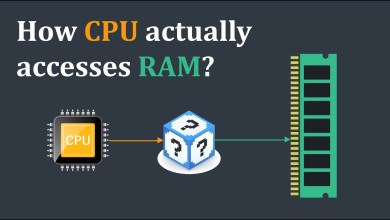Green Computing
Exploring Knowledge, Empowering Minds. Welcome to roshniwithhina, your go-to destination for captivating educational content. Join us in the journey of learning and discovery.
Green Computing
What is Green Computing?
Green computing refers to environmentally sustainable computing.
It involves designing, manufacturing, using, and disposing of computers, servers, and associated subsystems such as monitors in an environmentally friendly manner.
Adopting green computing practices can help reduce energy consumption, minimize e-waste, and lower greenhouse gas emissions.
Why is Green Computing Important?
Green computing helps reduce energy consumption, e-waste, and carbon footprint. Use virtual meetings, energy-efficient hardware, and cloud storage.
Practices for Green Computing
Use energy-efficient computers and electronic devices.
Reduce paper usage by printing only when necessary.
Dispose of electronic waste properly and responsibly.
Benefits of Green Computing
Green computing aims to reduce the environmental impact of computing through energy efficiency, waste reduction, and sustainable practices. This benefits both the planet and your bottom line.
Energy Efficient Computing
Energy-efficient computing reduces energy consumption and carbon footprint.
Strategies include virtualization, power management, and cloud computing.
Benefits of green computing include cost savings, reduced environmental impact, and improved corporate social responsibility.
Here are some key components of green computing
Energy-Efficient Hardware:
Selecting energy-efficient components, such as processors, power supplies, and cooling systems, to reduce energy consumption and heat generation.
Virtualization:
Using virtualization technologies to consolidate multiple virtual servers on a single physical server, which reduces the number of physical servers required, thus saving energy.
Data Center Cooling:
Employing more efficient cooling and airflow management techniques to maintain optimal data center temperatures and reduce energy used for cooling.
Renewable Energy Sources:
Transitioning to renewable energy sources, such as solar or wind power, to power data centers and reduce reliance on fossil fuels.
Energy-Efficient Data Storage:
Implementing energy-efficient data storage solutions, like solid-state drives (SSDs), which consume less power and generate less heat compared to traditional hard disk drives (HDDs).
Thin Client Computing:
Replacing traditional desktop computers with thin clients, which are lightweight devices that rely on a central server for processing, reducing the energy consumption of individual workstations.
Energy-Efficient Displays:
Choosing energy-efficient monitors and displays with features like LED backlighting and automatic power-saving modes.
Power Management:
Enabling power-saving features on computers and monitors, such as sleep mode and hibernation, to reduce energy consumption during periods of inactivity.
Green Software Development:
Developing software with a focus on energy efficiency, optimizing code, and reducing resource consumption.
E-Waste Management:
Implementing responsible disposal and recycling practices for electronic waste, including old computers and hardware components.
Remote Work and Telecommuting:
Encouraging remote work and telecommuting to reduce the need for physical office spaces and associated energy consumption.
Lifecycle Assessment:
Conducting a thorough lifecycle assessment to evaluate the environmental impact of hardware and software throughout their entire life cycle, from production to disposal.
Regulatory Compliance:
Complying with environmental regulations and standards related to electronic waste disposal and energy efficiency.
Thank you for listening and learning about how we can all contribute to a more sustainable future through green computing practices.
Subscribe now!
#GreenComputing
#roshniwithhina
#computinggreen
#EcoFriendlyTech
#SustainableIT
#EnergyEfficiency
#RenewableEnergy
#DataCenterSustainability
#GreenTech
#ReduceEwaste
#ITRecycling
#DigitalSustainability
#EcoTech
#GreenDataCenters
#EnergySaving
#ClimateTech
#CleanTech
#EcoComputing
#GreenServer
#ITGreenPractices
#EcoAwareness
#TechForGood
#greenIT
#sustainableIT
#cleantech
#energyefficiency
#renewableenergy
#datacenters
#cloudcomputing
#greenbusiness
#ESG
[ad_2]
source



